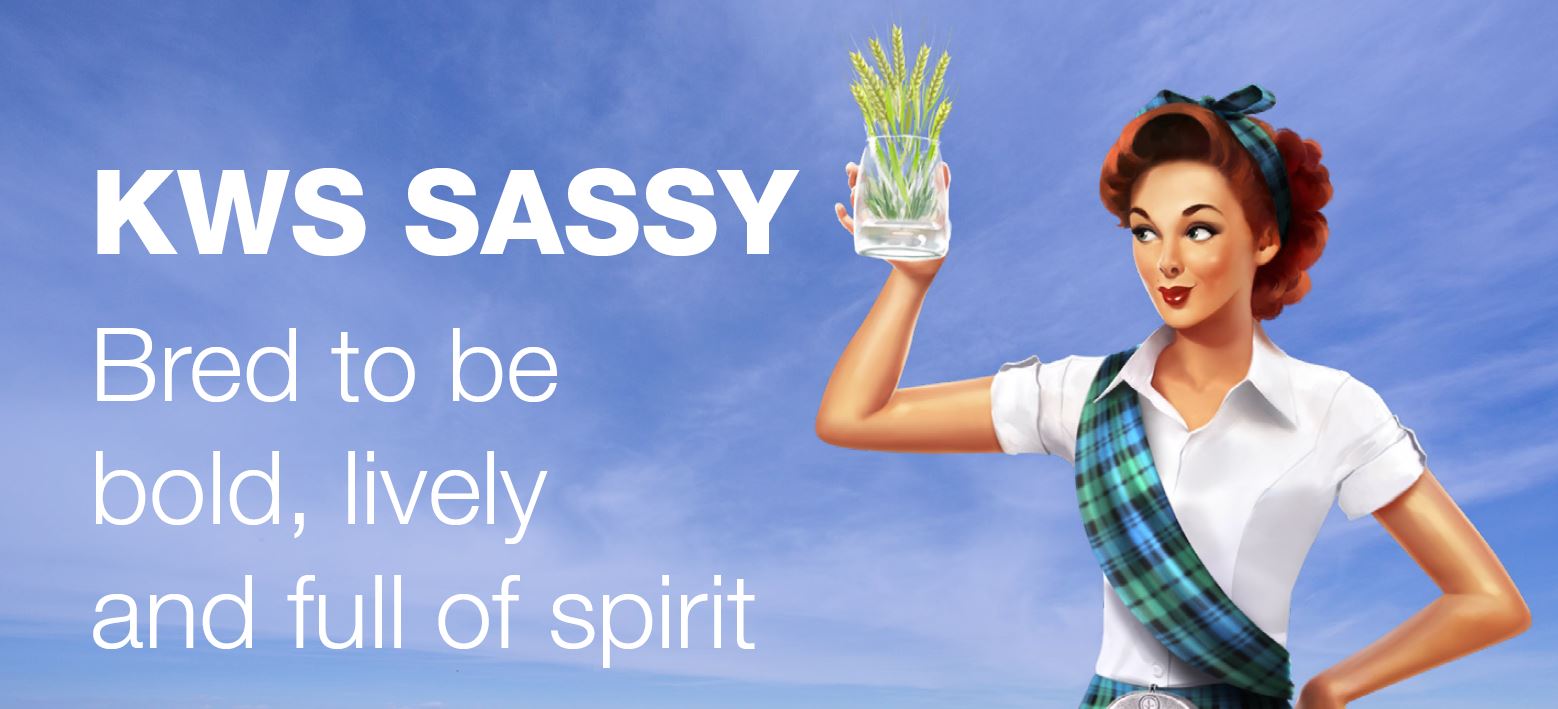KWS SASSY
Bred to be bold, lively and full of spirit
- Very high specific weight (69.6 kg/hl)
- Very low screenings
- Non-GN suited to the distilling market
Characteristics
About
KWS Sassy is a non-GN producing spring malting barley that has been tried and tested by the UK distilling industry. It is fully approved by the MBC for malting and distilling and continues to deliver the one of the highest specific weights (69.6 kg/hl) and the lowest screenings of any currently listed spring distilling barley – all key attributes for the maltster and grower alike. What’s more, over the seasons it has consistently delivered for growers, especially those in the north, where it delivers some of its better yields (96% controls). A taller type, KWS Sassy has a decent straw and strong agronomic package, including good resistance to Rhynchosporium (6) and mildew (8). At a +2 maturity, it is a similar maturing variety to many other commercialised distilling types.
| UK | 94 |
| East | 93 |
| West | 94 |
| North | 96 |
| Untreated | 82 |
| MBC malting approval for brewing use | no |
| MBC malting approval for malt distilling use | yes |
| MBC malting approval for grain distilling use | no |
| Specific weight | 69.6 |
| Screenings (% through 2.25mm) | 0.8 |
| Screenings (% through 2.5mm) | 1.9 |
| Mildew | 8 |
| Brown Rust | 5 |
| Rynchosporium | 6 |
| Height -PGR (cm) | 79 |
| Ripening | +2 |
| brackling % | 6 |
Farmer's Opinions
Your consultants







